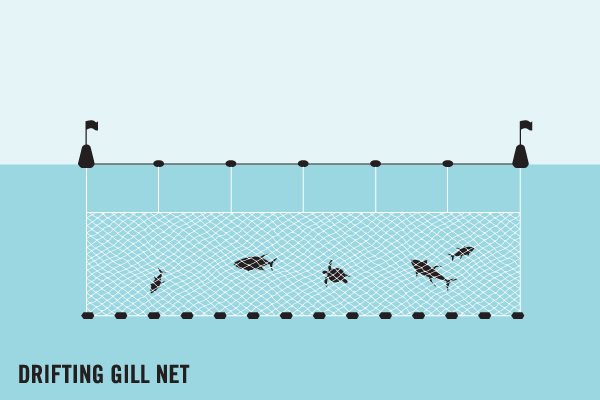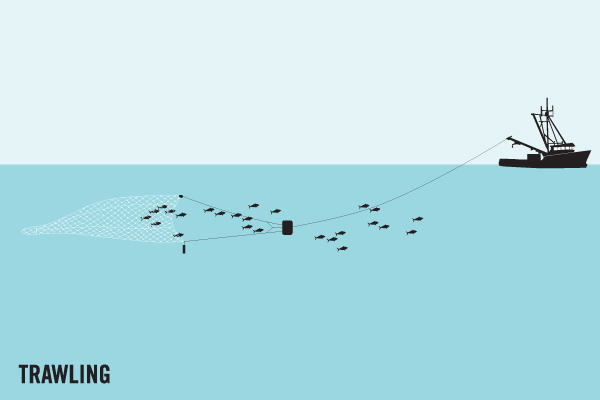Average Weight/Length
Schooling Blue Runners are about the same size, averaging under a pound and often under a half-pound. Fish weighing 1-2 pounds aren't unusual, and individuals up to 4 pounds or so are sometimes taken offshore. World record 11 pounds, 2 ounces;
Other "Popular" Names for this Fish
Hardtail Jack, Runner, Blue Jack
Location Habitat
Not choosy; inshore to deep sea. A schooling species generally not far from the coast, in coastal marine and brackish waters to at least 100 m depth. Juveniles often found in association with floating Sargassum, often entering lagoons and estuaries. Adults feed on fishes, shrimps, and other invertebrates. They spawn offshore from January through August. Eggs are pelagic. Excellent food fish; marketed fresh, frozen, and salted. Often used for bait. Maximum reported total length 550mm
Biology & Physical Description
Similar in shape to the Crevalle, but with a more gently rounded head. Color ranges from steel blue to light green with white underparts. Hard scutes forward of tail. Dorsal spines (total): 9; Dorsal soft rays (total): 22-25; Anal spines: 3; Anal soft rays: 19 - 21. Diagnosis: body elongate (depth comprised 3.2-3.5 times in fork length) and moderately compressed; snout slightly rounded. Maxilla ends below middle of eye. 2 dorsal fins, 1st with 8 spines, 2nd with 1 spine and 22-25 soft rays; anal fin with 2 spines, followed by 1 spine and 19-21 soft rays; anterior lobe of soft dorsal and anal fins moderately developed, their height smaller than head length; pectoral fins falcate, longer than head; scales small and cycloid; breast completely scaleless. 45 - 56 scutes along straight part of lateral line. Coloration: back light olivaceous to bluish-green, sides silvery-grey to golden; juveniles with about 7 dark crossbars on sides
Geographic Species Map (Fishbase.org Map)
|
|

|
Summary of Distribution: Eastern Atlantic: Senegal to Angola, including the western Mediterranean, St. Paul's Rocks, and Ascension Island. Reported from Mauritania. Western Atlantic: Nova Scotia, Canada to Brazil, including the Gulf of Mexico and the Caribbean. Also found in Argentina. In the tropical Eastern Pacific, it is replaced by Caranx caballus Günther 1869, which may be conspecific. |
|
Note: Distribution range colors indicate degree of suitability of habitat which can be interpreted as probabilities of occurrence (fishbase.org) |
|
Sport Fishing Techniques
|
|
Gill netsGill-nets are the dominant gear in the Indian Ocean. Gill-nets are used in artisanal and semi-industrial fisheries, contributing to 30-40% of the total catch. The net design is comprised of continuous panels of uniform mesh size, aimed to trap fish behind the gills. The International Sustainable Seafood Foundation (ISSF) notes that rates of sharks and turtle by-catch in Indian Ocean gill-net fisheries are high.. |
|
|
|
Kite Fishing (Rig)A Kite Fishing Rig is.... |
|
|
|
Kite Fishing (Trolling)Kite Fishing Trolling is when you are.... |
|
|
|
River DriftRiver Drift means to use the.... |
|
|
|
TrawlingTrawling is when.... |
|
Tackle & Baits
Light spinning and fly tackle with live shrimp, cut pieces of fish or small artificial jigs and flies.
Game Rating
Game Rating : 6/10
Game Description :
Blue Runners fight so well for their size that guides often have trouble tearing their customers away, after stopping to catch some Runners on spinning tackle for use as offshore bait.
Food Rating
Game Rating : 7/10
Game Description :
Pretty good, but seldom eaten.
Picture (Fish)
|
|
|
|
|
|




















 Blue Runner (Jack)
Blue Runner (Jack) 










